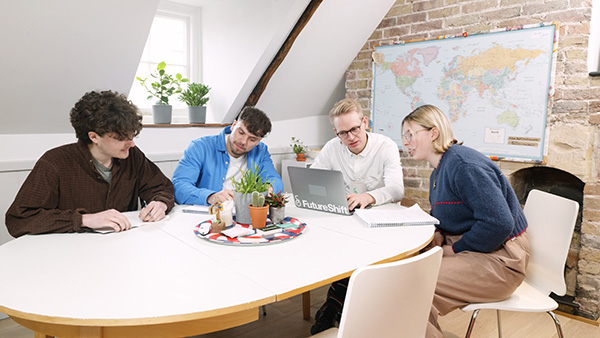How to think about sustainability

Okay. Now you’re here and thank you for clicking. Over the next 4 (just four!) or so of your precious minutes, I’m going to try to shift your fundamental understanding of what sustainability really looks like. There’ll hopefully be something in here for everyone.
The inspiration for this blog comes from the many protests, talks, webinars, seminars and sustainability consulting hours where I’ve had sustainability explained to me. The ideas in this blog are actually very simple, but it’s something that I (and hopefully future you) use every time I think about sustainability.

We, as people with human minds, have no other choice than to split the world around us into distinct categories in order to understand it. Some of the first works of scientific inquiry we do at school is dissecting a frog – splitting it into its component parts in order to understand it better. It works insofar as it allows us to understand better what ‘frog-ness’ means.
The exact same is true for how we begin to look at sustainability. We split it into the TLAs (three-letter acronyms): ESG (environmental, social, governance), CSR (corporate, social, governance), PPP (people, planet, profit) that make up the jargon of just about any sector. We’re going to focus on the common split of sustainability into environmental, social and economic categories and how they are often viewed wrong, and how a shift in how you look at them can help you think about sustainability.

If we look at the Google Image results for “social environmental and economic sustainability” we can see the age-old Venn diagram of three, equally sized, spheres which signals to us that these are equally weighted, slightly intersecting components of sustainability.
This gets a big fat NO from me and anyone who’s looked at sustainability at depth because it doesn’t get close to the reality of how these three ‘pillars’ of sustainability interact.
Here’s three reasons why the visualisations above are wrong:
- It shows that the economy, the society and the natural environment are of equal size and importance for sustainability
- It shows that the spheres only somewhat interconnect (and in the bottom-middle case in the figure above, don’t intersect at all).
- The large part of each of these systems exist in isolation from each other which is inextricably wrong. This also makes it look like these spheres can exist without each other.
Now to a better framing of these three spheres. Below we have a visualisation that better fits the reality of the world that we live in.

Here’s three reasons why the visualisation above is better:
- The economy, society and nature are not equal and never will be. We cannot see clearly from our limited human perspective – we wake up in concrete boxes, get in our metal boxes to sit in another concrete box for 8 hours, get back in our metal boxes to our personal concrete boxes in order to rest and occasionally get in a longer metal box that flies to enjoy ourselves. When we look at it from this perspective of course we’re going to be prone to mistakes when it comes to recognising the true proportion of things. We’re the centre of our worlds but not the centre of the world.
- The economy, society and nature don’t just interconnect, but are subsets of each other and are interdependent. The economy exists only within (and never outside) the society that made it up, human society exists only with nature and not outside it and nature can exist on its own without the others. As much as we like to think that we are gods, we are merely a subset of a wider nature, a little circle next to penguins, ants and mushrooms’ with no more authority in nature’s order of things.
- This also tells us a lot about the fragility of each of these three systems. If the economy is on its knees (because a group of American blokes decided to take excessive risks in 2008 or a flu-like virus starts killing all the old people in rich economies in 2019), society will still function just fine like it has for the last 10,000 years (apart from some very upset billionaires) and nature will probably be better off. If society implodes because a certain trembling Russian decides to push a big red button, nature will recover even if every last one of us is obliterated. But if nature is on its knees, so is our society and economy, and without society, the made up laws of economics will cease to be. The economy, whatever the news likes to tell you, is wild and fragile if you look at it relative to the other spheres.
The economy needs nature but nature does not need the economy.
We make mistakes (like destroying half of our regions biodiversity) as people and communities because we don’t see the world in the correct way. Shifts such as this towards seeing how systems actually exist and depend on each other can help us all make the critical decisions that make up our personal and collective impact.
—
Further watching: Triple bottom line (3 pillars): sustainability in business | Sustainability Illustrated – A great illustration of the three spheres of the economy.
Further listening: ‘Only Connect…’ |The Reith Lectures | Edmund Leach – A Runaway World –
This podcast has been my mantra for the last year and speaks some deep truths of our society and the nature of things.
Further watching: – How language shapes the way we think | Lera Boroditsky – One of the biggest squeezes on how we interpret the world around us is language. In this Ted Talk, Lera Boroditsky explains how the categories we use to break things down and thus interpret them can distort even our most fundamental senses from our sense of direction to how we see and understand colours.



